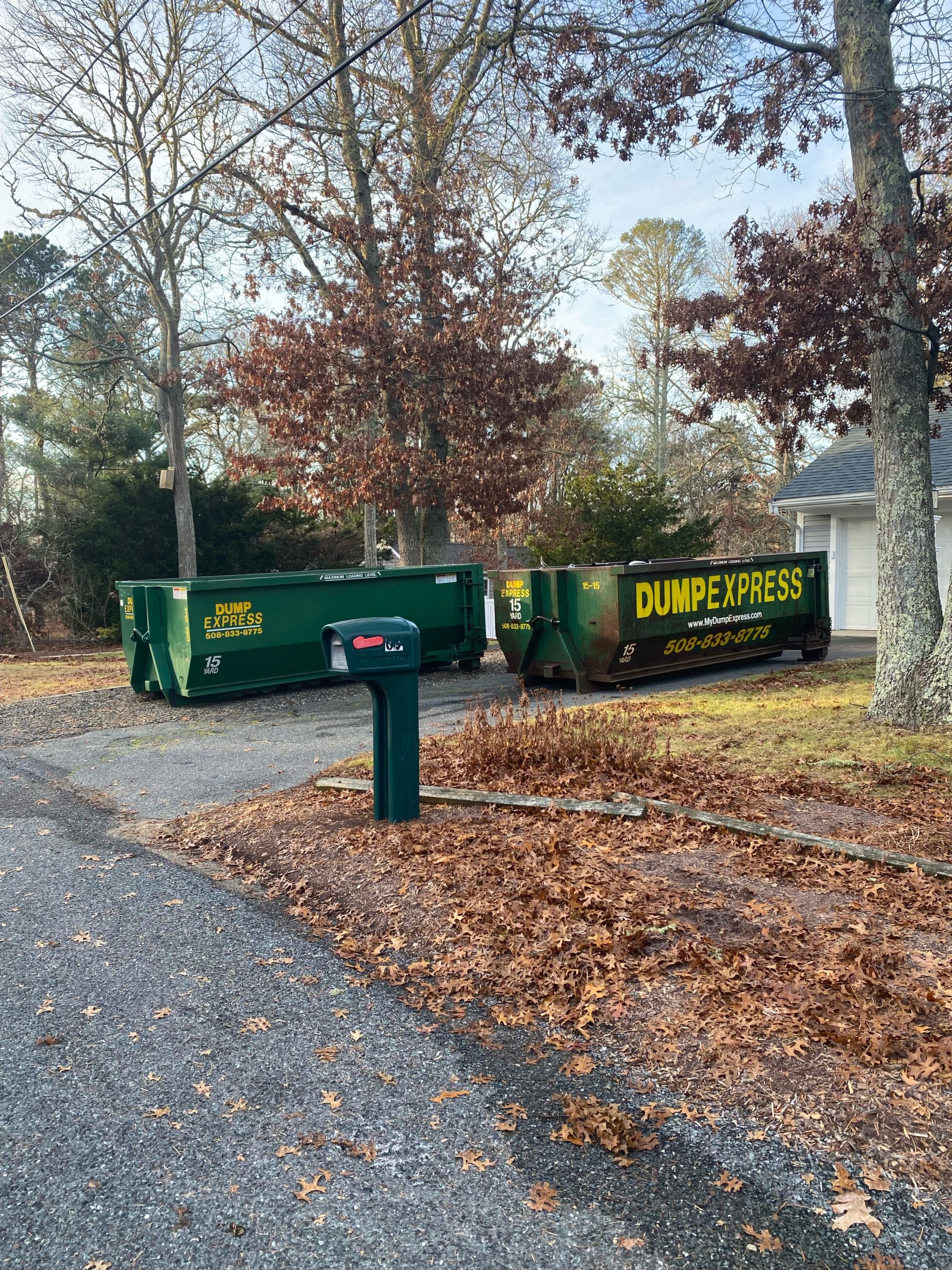Renting a dumpster can significantly ease the waste management process during various projects, from home renovations to construction endeavors. While dumpsters are valuable tools, it’s crucial to prioritize safety to ensure a hazard-free experience. Dumpsters are huge metal containers and they can fall or otherwise cause harm. Dump Express will share essential safety guidelines for using rented dumpsters, emphasizing proper loading techniques and precautions to prevent accidents and promote a secure working environment.
1. Site Assessment: Lay the Groundwork for Safety
- Before the dumpster arrives, conduct a thorough site assessment. Ensure the placement area is stable, level, and capable of supporting the weight of the dumpster. Clear any obstacles, debris, or overhanging branches that could impede the safe operation of the dumpster.
2. Proper Placement: Position for Accessibility and Safety
- Work closely with the Dump Express to determine the optimal placement location. Position the dumpster in an easily accessible area, considering the workflow and minimizing the need for excessive movement of materials. Avoid placing the dumpster on uneven or soft ground, as this can lead to stability issues.
3. Weight Distribution: Maintain Stability
- Proper weight distribution within the dumpster is crucial for stability. Avoid uneven loading that can lead to tipping or shifting of the container. Distribute heavy items evenly across the bottom and fill the dumpster gradually, ensuring a balanced load.
4. Overloading Prevention: Stick to Weight Limits
- Adhering to weight limits specified by us is vital for safety. Overloading can strain the container, compromise its structural integrity, and increase the risk of accidents during loading, transportation, or unloading. Stay within the prescribed weight limits to ensure a secure operation. There are regulations for transporting container as well.
5. Prohibited Items: Avoid Hazards
- Familiarize yourself with the list of prohibited items, or call if you unsure. Do not dispose of hazardous materials, chemicals, or any liquids in the dumpster, as these pose safety risks and may lead to additional fees or refusal of a dumpster at the landfill. Implement alternative disposal methods for such items to maintain a hazard-free environment.
6. Loading Techniques: Work Safely and Efficiently
- When loading the dumpster, prioritize safety by adopting proper techniques. Lift with your legs, not your back, to prevent strain or injuries. Use sturdy containers for smaller items, and exercise caution when disposing of bulky or heavy materials. Do not throw items into the dumpster, as this can lead to injuries or create an unstable load.
7. Fall Protection: Mindful Loading at Heights
- If loading materials into a raised dumpster, use proper fall protection measures. Never climb onto the dumpster, and avoid leaning over the edges. Consider using ladders or scaffolding for safer access to higher points, ensuring a secure and accident-free loading process.
8. Weather Considerations: Adapt to Conditions
- Be mindful of weather conditions, especially during windy or rainy periods. Secure lightweight items to prevent them from being carried away by the wind. If adverse weather conditions pose safety risks, consider delaying the loading process until conditions improve.
9. Clear Communication: Collaborate for Safety
- If multiple individuals are involved in the loading process, clear communication is essential. Ensure everyone is aware of loading protocols and safety procedures. Maintain an open line of communication to address any concerns promptly.
10. Emergency Preparedness: Know What to Do
- Have an emergency plan in place in case of unforeseen incidents. Ensure all participants are familiar with emergency procedures, including how to contact emergency services and the dumpster rental provider. Having a first aid kit on-site is also a prudent precaution. This is good advice for any situation.
11. Timely Reporting: Address Issues Promptly
- If you notice any issues with the dumpster, such as damage or instability, report them promptly to the rental company. Addressing potential problems early on can prevent accidents and ensure the continued safety of the work environment.
12. Timely Removal: Complete the Process Safely
- Once your project is complete, ensure the dumpster is properly loaded and not over the fill line so it can be safely loaded, tarped and transported to the recycling facility. Avoid keeping a dumpster on-site longer than necessary to minimize the risk of accidents or unauthorized use. Coordinate with the us to schedule timely removal.
By prioritizing safety and adhering to these best practices, you can do you project without any issues. Remember that safety is a collective responsibility, and open communication, proper loading techniques, and precautionary measures are integral to creating a secure working environment. Whether you’re tackling a home renovation, construction project, or major cleanout, implementing these safety guidelines will not only prevent accidents but also contribute to a seamless and efficient waste management process. A secure dumpster rental experience ensures that your focus remains on the project at hand, with the peace of mind that safety is at the forefront of every step.

